| Home |
| Acknowledgments |
| Conventions |
| Glossary |
| Maps |
| References |
| Links |
| Articles |
| Thumbnails |
| Species
list |
| Family |
| Next
species |
Additional Photos
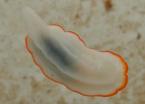
underside

side
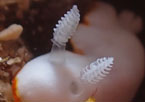
rhinophores
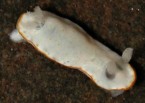
spotted
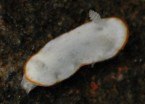
young, 3.8 mm
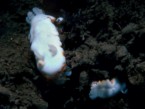
feeding
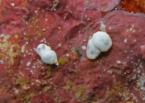
in field

mating
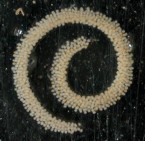
egg mass
_______________
GALLERY

Goniobranchus cf. verrieri (Crosse, 1875)
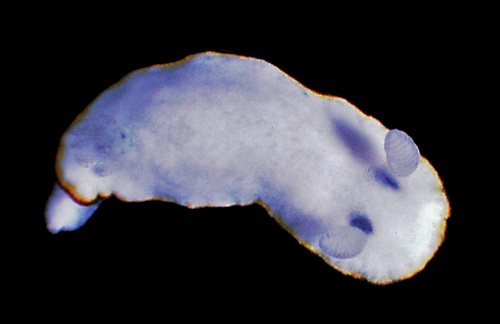
| Maximum size: 13 mm. Identification: This dorid is usually completely white except for a red-orange marginal band and a yellow submarginal band (often irregular). Occasional animals may have faint orange spots on the notum. (Note 1) Its soft body is convexly rounded. Natural history: Goniobranchus cf. verrieri is a moderately common, nocturnal species found in protected to moderately exposed rocky habitats from the low intertidal to 11 m (36 ft). It may also be found in Halimeda kanaloana beds to depths of at least 15 m (49 ft). It conceals itself under rocks during the day or rests in the open on shaded cliffs. Scott Johnson reports it feeding on a black sponge at Magic Island on Oahu. It lays a pale orange egg mass and each egg has a small bright “cap” of extra-capsular yolk. In an egg mass laid in the laboratory, the extra-capsular yolk was absorbed by the end of the second day of development and hatching occurred in about five days. Distribution: Big Island, Maui, Oahu, Kauai and Midway: widely distributed in the Indo-Pacific. Taxonomic notes: This species was listed as Chromodoris marginata Pease, 1860 in Kay, 1979 and Chromodoris trimarginata Winkworth, 1946 in Kay & Young, 1969. Hawaiian animals differ from G. verrieri found elsewhere in the Indo-Pacific in lacking maroon pigment on the rhinophores and gills. However, they may still be distinguished from Goniobranchus albonares in having proportionately smaller rhinophores that are usually held in a more lateral position. The lack of opaque-white highlights on the rhinophores and gills (as well as the presence of small orange spots on the notums of some individuals) separate the Hawaiian animals from both species. It was probably first reported from Hawaii in Pease, 1860 (as Doris marginata). Previously, it was referred to as Chromodoris verrieri. Given the color differences from most G. verrieri found elsewhere, we've decided to "cf." it pending further work although Terry Gosliner lumps the Hawaiian population with that species (pers. com.). Photo: PF: 6 mm: off Makena, Maui; Oct. 12, 1987. Observations and comments: Note 1: We've found spotted and unspotted animals paired in the field. |
| Thumbnails |
Species
list |
Family | Next species | Top |